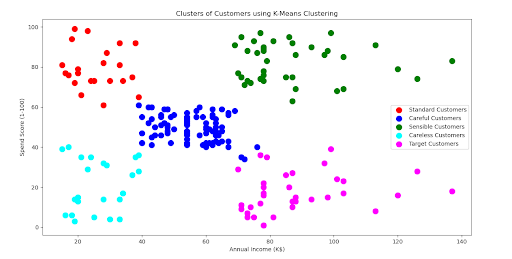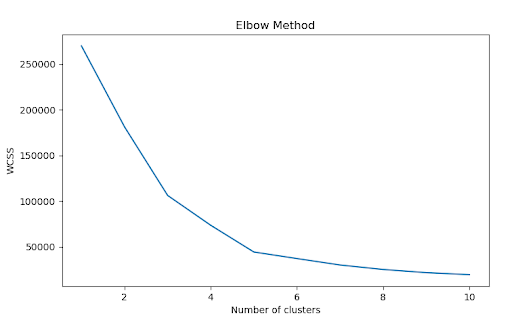
Description:
Customer segmentation is a process of dividing customers into groups based on certain characteristics, such as age, gender, location, interests, and more. It helps businesses better understand their customers and create marketing campaigns that target specific segments more effectively. By segmenting customers, companies can tailor their offerings and improve their customer service, resulting in increased customer loyalty and higher profits.
Customer Segmentation solves many purposes:
-
- Targeting different customer segments with tailored marketing campaigns.
- Developing customer loyalty programs.
- Identifying customer needs and preferences.
- Designing tailored products and services to meet customer needs better.
- Enhancing customer service experiences.
- Identifying customer segmentation opportunities for cross-selling and up-selling.
- Improving customer segmentation and segment-specific communication.
- Allocating marketing resources more efficiently.
- Detecting and addressing customer churn.
- Developing predictive models for customer behaviour.
K Means Clustering Algorithm
The K Means clustering algorithm is a popular method of customer segmentation. It is an unsupervised learning algorithm that can be used to identify meaningful patterns in data. The algorithm works by grouping similar customers together into clusters or segments. Each segment is made up of customers who share similar characteristics. This allows businesses to better understand the needs and preferences of each segment and tailor their products and services accordingly. To use K means Clustering algorithm for customer segmentation:
- Specify the number of clusters K.
- Shuffle the dataset and randomly select K data points for the centroids without replacement. This will help you in initializing centroids.
- Iterate until there is no change to the centroids i.e. assignment of data points to clusters isn’t changing.
Coding Steps for Customer Segmentation for Product Survey
Step 1. Import dependent libraries and functions for the project.
Step 2. Import survey data set of mall customers.
Step 3. Locate annual income and spending score.
Step 4. Now, find out k mean number.
Output: The following graph shows the segmentation of 5 clusters.
Step 5. Now, introduce kmean cluster prediction function for customer segmentation.
Output:
Step 6. Plot the graph b/w Annual income and Spending score for different clusters.
Output:
Conclusion:
Customer segmentation is a powerful tool for any business. By using customer segmentation, businesses can gain valuable insights into their customer base and create better customer experiences. This tutorial certainly helped you gain insight into the product survey process in data science. Have any queries related to the tutorial? Feel free to ask.




